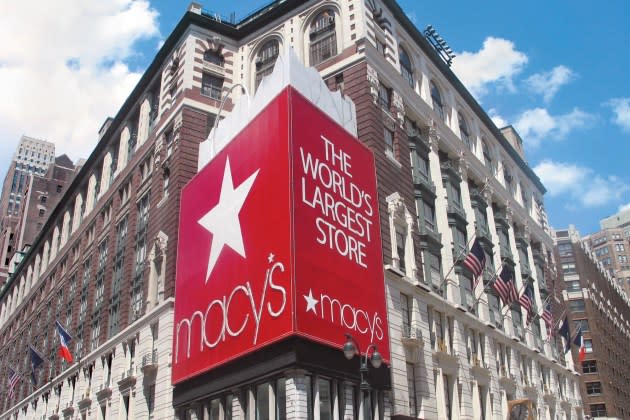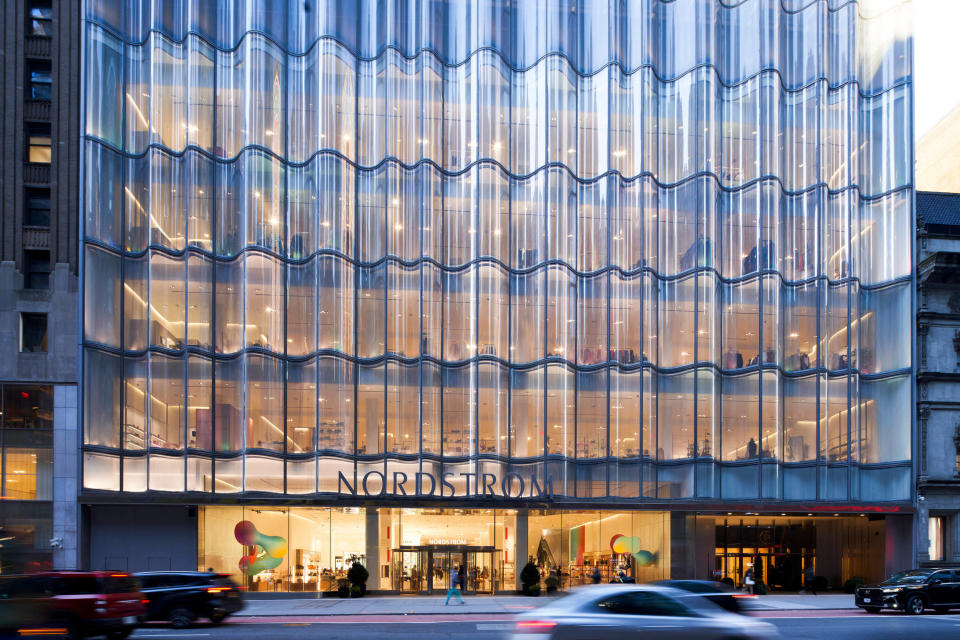Department Stores Rebuild for a New Retail World


When Jeff Gennette came to the phone in November for his last quarterly report as chief executive officer of Macy’s Inc., he had a long list of accomplishments from his nearly seven-year tenure at the top.
He also had one, almost wistful acknowledgement — telling WWD that “really consistent profitable growth” had eluded him.
More from WWD
Givenchy Plage Stretches Out With Saks Fifth Avenue and Mytheresa
The Divine Nine Black-founded Fraternities Inspired This New Fashion Collection
Macy's 4th of July Fireworks in NYC Move to New Location, After 11 Years
Gennette isn’t alone.
“Really consistent profitable growth” has long eluded department stores. And the consequences are front and center of the news cycle.
Macy’s, after facing activist pressure, opened up its books to suitors Arkhouse Management and Brigade Capital, which want to take the company off the market.
Erik and Pete Nordstrom are looking, again, to take the retailer founded by their great-grandfather private.
Richard Baker, who already took Hudson’s Bay Co. private, seems closer to realizing his long-held ambition to buy Neiman Marcus and merge it with his Saks business (although both businesses are looking to find their stride).

That’s a lot of change and challenge and all at once. The stores and the actual businesses are not going to disappear tomorrow. Macy’s, Nordstrom, Dillard’s and the largely off-mall Kohl’s, collectively drove nearly $63 billion in sales last year, marking a decline of $3.2 billion, or 4.8 percent, from 2022.
But with a steady pace of store closures and sales declines set against a backdrop of changing shopping habits, department stores have work to do to cement their place in the future.
A generation ago, customers needed department stores to do their one-stop shopping. Brands vied for floor space and subsequent access to consumers. And mall owners offered up sweet deals so the big stores would anchor their properties.
Now, customers can click their way to anything. Brands funnel shoppers to their own stores. And malls have opened their hearts and floor plans to other concepts, from Whole Foods to gyms.
More than that, department stores lost their connections — with consumers and with parts of the fashion ecosystem they once supported.
“They used to incubate all the new designers,” said Michael Brown, partner and Americas Retail Leader at the Kearney consulting firm. “Tommy Hilfiger, Ralph Lauren, Donna Karan, all of them started in the department stores and then they moved out and opened up their own stores. They need to return to those roots. There are numerous new brands being incubated online. And when brands are incubated online, they’re only going to be able to grow to a certain level. They can’t get the exposure that they need.
“Right now a lot of department stores are still thinking the path to success is their private brands,” Brown said. “Consumers don’t aspire to wear a private brand. They want the hottest brand, the new designer brand, the up-and-coming brand. And none of the department store brands are really morphing into that.”
To potentially kickstart growth, department stores need to shrink and focus their businesses, Brown said, with a “tiered” system that includes big flashy stores in the fashion meccas and then tech-savvy omnichannel touchpoints in other markets.
Growing smaller — even if that means creating a more potent proposition for today’s consumers — isn’t going to be easy.
Martha Pease, brand transformation expert and former chief marketing officer, said: “Their entire infrastructures and data systems are geared to mass or geared to really high volume. They’re geared to calendars and cadences of how they assort and how they buy that are finely tuned, for better or for worse, to the kind of massive scale that they occupy.”
Some of the rightsizing is at least partially done.
Macy’s, for instance, said it would cut another 150 underproductive doors by the end of 2026, leaving it with 350 “go forward stores.” That’s down from about 850 stores 15 years ago — a period that’s seen other traditional department stores, like Lord & Taylor, go dark.

Once they’ve scaled back, department stores will need to lean more on emotional and community ties to drive sales. Lucky for them, that’s something they have a long history of doing.
Generations of kids have whispered their hopes and wishes into Santa’s ear just like in “Miracle on 34th Street” or gathered to watch Garfield float down Sixth Avenue in the Macy’s Thanksgiving Day parade. Neiman Marcus encourages well-heeled consumers to dream big with its fantasy gifts, and Nordstrom has its famous Anniversary Sale.

Those are just the sign-post moments that build on in-store experiences that at their best provide a little spark of excitement or emotion — something that lingers much longer than, say, the convenience of one-stop shopping.
“Emotional connections change much more slowly than functional connections,” Pease said. “If you can really isolate the emotional connection — ‘Where’s that resided? What’s kind of the nexus of that? What’s the emotional connection?’ — it’s quite likely that some flavor of that is still relevant in some way, because emotions take decades to change.
“The emotional residue from the past is very fertile territory for understanding potentially how you rebuild,” she said. “The functional connections change more quickly.”
Department stores have already tried big. Now they need to go, if not small, smaller. It should be a better world for them with more community, more connections to customers and, probably, stronger profits.
The Bottom Line is a business analysis column written by Evan Clark, deputy managing editor, who has covered the fashion industry since 2000. It appears every other Thursday.
Best of WWD

 Yahoo Finance
Yahoo Finance 